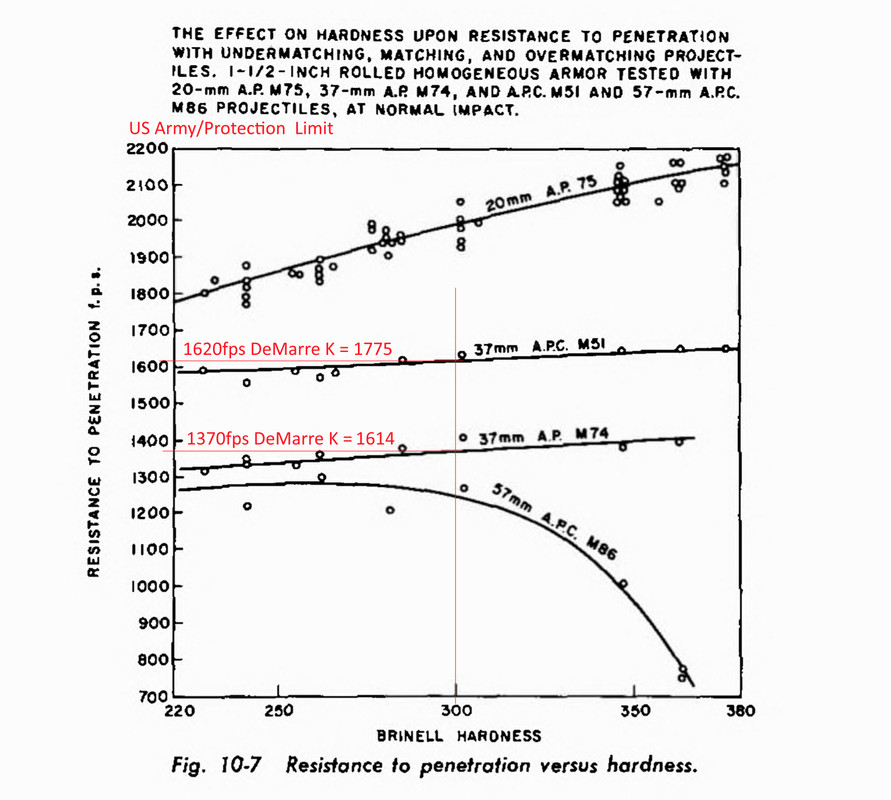There is a hole in that neat theory of yours, the 3.7cm AP shell did not break up at low-mid obliquity unlike the 5cm shell under similar conditions, probably owning to the lower striking velocity (703m/s vs 866m/s). This does leave a possibility for the weakness to adiabatic shear in that gauge of plate.critical mass wrote: ↑28 May 2020, 18:17In this thickness range, the 75mm projectile is badly overmatched. Ductile holing will be a common failure mode for pointed projectiles if the projectile manages to stay intact. In order to test vs shock they would have needed a 12.8-15cm blunt target slug projectile, which one may critisize, would have beared little relationship to real world needs. However, projectile break up increases variance and increased variance correlates with reduced relevance of test results, i.e. less desirable from QC point of view. Low hardness armor fails typically by exceeding the resistence to plastic deformation, i.e. the soft armor further reinforces ductile holing events. Keeping the cap in such a case (remember, they tested acceptance quality floors for procurement of armor plate) just reduces a source of error (projectile quality variance).
Thinner gauges were treated to higher hardness and shock resistence to adiabatic shear failure then becomes much more probable failure modes, which needed to be guarded against.
I'm gonna say probably something really stupid, but, perhaps this is the reason why the thicknesses near the lower end of the spectrum tested by the 5cm ohne kappe shell required such high obliquity angles to guarantee immunity?


